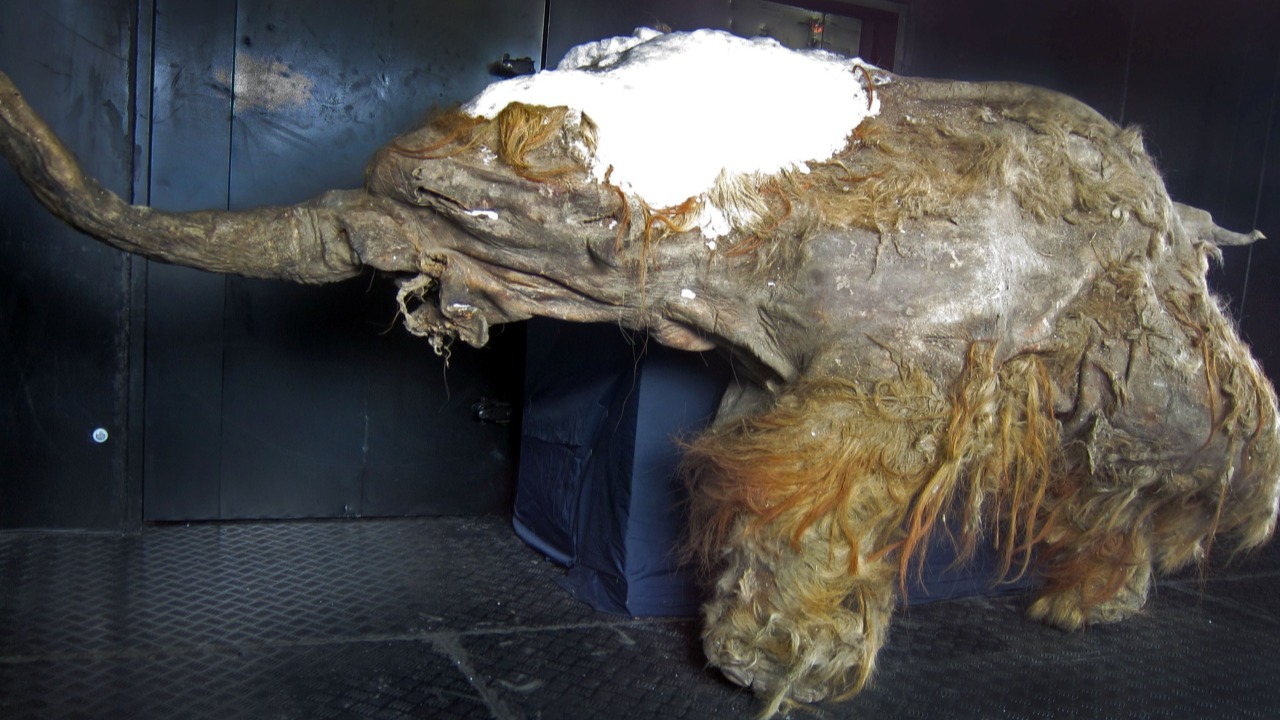
In a remarkable find that has left the scientific community astounded, a perfectly preserved baby mammoth, dating back approximately 50,000 years, has been unearthed in Siberia’s Batagaika crater. The discovery, led by researcher Pavel Nikolsky, offers an unprecedented glimpse into the life of the Ice Age, with the specimen’s face and features intact, revealing details such as fur and eye structure.
Site of the Discovery
The Batagaika crater in Siberia, a vast permafrost depression known for its rich trove of ancient fossils, was the site of this extraordinary discovery. The excavation was part of a scientific expedition in the remote Yakutia region of Russia, a place where the thawing permafrost has consistently exposed numerous Ice Age remains. The unique conditions of the site, including constant subzero temperatures, played a significant role in the preservation of the specimen.
Age and Physical Description
Preliminary radiocarbon dating of the surrounding permafrost layers suggests that the mammoth is approximately 50,000 years old. The juvenile specimen, weighing around 100 kilograms and measuring about one meter in length at the time of death, is a rare find. The remains include intact tusks, trunk, and legs, with no signs of scavenging or decay, providing a unique opportunity for detailed study.
Preservation Quality
The quality of preservation is exceptional, with the face perfectly preserved, showing detailed features such as closed eyes, eyelashes, and soft tissue that appear almost lifelike after thawing. The fur and skin are largely intact across the body, with reddish-brown hues visible on the head and limbs. Even the internal organs, including the heart and stomach contents, remain frozen and potentially analyzable for diet and health insights, as photographs of the remains reveal.
Scientific Team and Initial Assessment
The discovery was made by a team from the North-Eastern Federal University, led by scientist Pavel Nikolsky, who described it as the “world’s best” preserved baby mammoth. The initial on-site examination involved careful extraction using specialized tools to avoid damaging the permafrost-encased body. The specimen, affectionately nicknamed “Luba” by the team, was transported to a lab in Yakutsk for further study.
Significance for Paleontology
This find is extremely rare, as baby mammoths are less commonly preserved than adults due to their smaller size and vulnerability. It provides new data on mammoth development, potentially revealing growth patterns and causes of death in juveniles. Comparisons to previous Siberian discoveries, like the 2013 Lyuba mammoth, highlight this one’s superior facial preservation, making it a significant addition to paleontological research.
Future Research and Implications
Planned analyses include DNA extraction to explore mammoth genetics and possible de-extinction applications. Examination of the stomach contents could identify the 50,000-year-old environment, including vegetation and climate at the time. This discovery underscores the urgency of preserving Siberian permafrost sites amid climate change threats to future finds, highlighting the importance of this region for understanding our planet’s prehistoric past.
More from MorningOverview